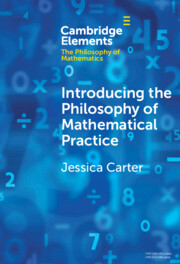Element contents
Introducing the Philosophy of Mathematical Practice
Published online by Cambridge University Press: 27 November 2024
Summary
Keywords
- Type
- Element
- Information
- Online ISBN: 9781009076067Publisher: Cambridge University PressPrint publication: 02 January 2025
References
- 8
- Cited by

